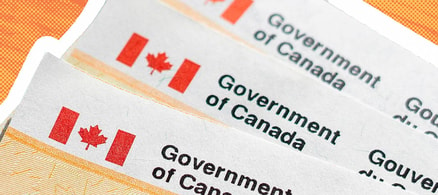From the origins of FIRE, we’ve also seen a number of variations spring to life, from Barista FIRE where you retire early but pick up some part-time and less stressful work, to fatFIRE where you retire with a larger than normal nest egg to live a more upscale lifestyle.
My preferred offshoot of FIRE is something called Coast FIRE or Coast FI.
What is Coast FIRE?
Coast FIRE is a retirement path for people who are drawn to financial independence but don’t necessarily want to retire early. It involves fairly aggressive savings to build up a large investment portfolio by a certain age. Then you stop contributing to your investments and let compound interest work its magic.
The idea with Coast FIRE is to save and invest enough at an early age so you can achieve your retirement goals without any further contributions.
Let’s say you’ve managed to build a $250,000 investment portfolio by age 40 and you expect that to grow at a rate of 6% per year. You want to retire at age 60. Using a future values calculator to run the numbers, your portfolio would be worth $800,000 even if you never contributed another dollar to it again over that 20-year period.
That $800,000 nest egg might allow you to safely spend up to $32,000 per year throughout retirement.
READ MORE: How much money do I need to save for retirement?
How does Coast FIRE work?
Coast FIRE is actually an old concept that financial institutions have been telling us about for years, just without the catchy name. Remember the tale of two twin siblings? The first sibling starts investing early in life, diligently setting aside money every year for 10 years and then stops. The second sibling waits 10 years before investing but invests the same amount every year until retirement. Who ends up with more money?
An astute reader will know that investing early leads to a larger portfolio, even though the total amount invested is much smaller.
Putting some numbers to this tale, let’s say the first sibling invested $5,000 per year between the ages 25 and 35, earning an annual rate of return of 8%. Meanwhile, the second sibling waits until 35 and then invests $5,000 per year for 30 years, until age 65, earning the same 8% annual rate of return.
The first sibling contributes just $50,000 but ends up with a portfolio worth $728,868. The second sibling saves three times as much – $150,000 – but ends up with a smaller portfolio worth just $566,416.
That’s right, the first sibling is the OG of Coast FIRE!
How do you know if Coast FIRE is the right path for you? Do you tick any of these boxes?
- A strong saver who isn’t interested in early retirement
- Looking to enhance your lifestyle rather than contributing more to retirement accounts
- No desire to leave an inheritance (Die With Zero)
- Interested in scaling back work to part-time and just living off a smaller income
READ MORE: The Money.ca guide to successful investing
Where Coast FIRE fits into my own investment journey
I happen to tick all four of these boxes. At age 42 I have nearly $800,000 invested across various account types (RRSP, TFSA, LIRA, Non-registered). My registered accounts are fully maxed out, meaning I caught up on unused contribution room years ago. Rather than leaving my children an inheritance when I’m 95, I’d prefer to contribute to their post-secondary education, plus a monetary gift for a down payment or to start a business. Finally, I recently switched careers and left a day job in the public sector to run my own financial planning business–something I’m truly passionate about where I can set my own hours and rates.
My idea for Coast FIRE is to scale back my work so that I only take on a select number of financial planning clients and freelance writing assignments throughout the year. The plan is to earn enough to meet our spending needs, contribute to my wife’s and my TFSA, and contribute to our kids’ RESPs. Those contributions will total $17,000 for the year. For context, we were contributing $50,000 annually to our combined accounts over the past several years.
I invest in a globally diversified portfolio using Vanguard’s All Equity ETF (VEQT) across all my accounts. I’ll let my investments compound while only making those small annual TFSA contributions. Meanwhile, I’ll get to have more active leisure time to spend with my wife and kids, travel more as a family and knock off some bucket list adventures together.
READ MORE: The best all-in-one ETFs in Canada
How is Coast FIRE calculated?
The best way to calculate your Coast FIRE number is to determine how much money you’ll need to draw from your investment portfolio to meet your spending needs in retirement.
Let’s say you want to maintain your current standard of living in retirement. That means you simply add up all your spending, not including mortgage payments or savings contributions. Now subtract what you’d expect to receive in retirement benefits from Canada Pension Plan and Old Age Security.
For our situation, we want to spend about $90,000 after taxes annually. We expect to receive about $25,000 per year combined from CPP and OAS. We’ll need to withdraw $65,000 per year from our investments (ignoring taxes for simplicity).
Next, we use a future value calculator and input our current portfolio value. In my case, we’d use a starting value of $800,000, an annual rate of return of 6%, and a period of 18 years (until I’m 60) to determine the future value of my current portfolio when I stop working.
Wow. Even if I never contribute another dollar to my investments, they will grow to more than $2.28 million.
How long will that nest egg last? I used a basic Monte Carlo simulator to show me the probability of running out of money if I withdraw $65,000 per year for 35 years from a portfolio worth $2.28 million. I assumed my portfolio asset mix would be 60% stocks, 20% bonds, and 20% cash for the duration of my retirement.
The results showed there was a 97% chance that my portfolio would sustain my spending for the duration of a 35-year retirement. That’s because I would only be withdrawing 2.9% of the portfolio balance each year.
What is clear to me is that I can easily stop contributing to my retirement savings and coast for the next 18 years–letting my investments grow and compound on their own. My retirement is secure.
How to calculate your Coast FIRE number
Your spending rate is the key variable in your financial plan. If you want to spend $100,000 per year in retirement, your Coast FIRE number is going to be very different from someone who only needs to spend $50,000 per year.
Start with your spending. How much does it cost for you to live the type of lifestyle you want to live (ignoring debt repayments, which will hopefully be finished, as well as savings contributions)?
A quick rule of thumb is to multiply your spending amount by 25 to determine the size of the portfolio you’ll need to sustain your spending in retirement. Someone who spends $50,000 per year would need a portfolio worth $1.25 million by the time they retire.
When do you want to fully retire? Let’s use the traditional age of 65 for this example. Assess where you are right now in terms of age and current portfolio balance, and when you want to reach Coast FIRE. Let’s say you’re 35 now and want to reach Coast FIRE at 40.
Use a present value calculator to determine your Coast FIRE number. Input the future value of $1,250,000 (the balance you need to sustain your retirement spending at 65), and 25 periods to represent the number of years from 40 to 65. Enter a reasonable annual rate of return of 6%.
We get a present value of $291,248. That’s your Coast FIRE number – the amount you need to have invested by age 40 so it can grow and compound to reach your $1.25 million goal by age 65 without ever contributing another dollar again.
What can you do after hitting Coast FIRE?
One reason Coast FIRE is so appealing is that once you reach that magic number you open so many options in terms of how you want to live your life. You could:
- Spend more. Your investment accounts are funded, and you’ve reached your Coast FIRE number. Time to define your rich life and enhance your lifestyle accordingly. The caveat is that your Coast FIRE number is based on a predetermined spending amount, so you need to be prepared to adjust back to that standard of living.
- Work less. You’ve presumably been able to save and invest at a high rate because you make a decent salary. Now that you’ve reached Coast FIRE it’s time to scale back. Could you negotiate working 3-4 days a week? Quit your job and do something less stressful and/or more meaningful? Start your own business?
- Spend more and work less. Maybe you like your job, but you’d rather do it on your terms. Again, negotiate a deal with your employer to work less. If you work for yourself, you can take on projects that you enjoy working on, and say no to the rest. Maybe you want to maximize the enjoyment of your life and career by upgrading your travel budget with business class flights and more luxurious accommodations while scaling back on other purchases and life expenses. How you navigate that balance is up to you.
I think Coast FIRE is the best retirement savings strategy because it gives you options to design the type of lifestyle you want to live. Instead of retiring super early and living on a meagre budget or working at a job you hate until age 65, you can reach your Coast FIRE number and then adjust your earnings and spending to suit your lifestyle without worrying about saving another dollar towards retirement.
Want to learn more about how to retire early? Check out our Guide to Retirement Planning in Canada!





